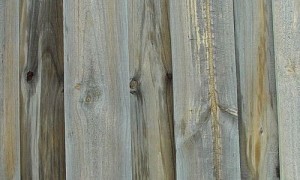For Dallas–Fort Worth pet lovers, corralling furry companions with the appropriate backyard fencing can keep little doggies safe and sound. When contemplating the best type of enclosure for a pet, consider whether your dog would thrive behind the bulk of a traditional fence or a view-gifting electric fence. Both physical and invisible fences offer advantages and disadvantages for pets, whether Texas-bred or Texas-fed.
Cost: the Bottom Line
Electric fences can be easy to install and relatively inexpensive, when compared to the construction costs associated with traditional fences. While building a physical barrier to keep your pet’s wanderlust at bay may require the hiring of contractors, invisible fences can be installed by homeowners and can cost thousands less than their permanent counterparts. In addition, invisible fences can successfully cover over 25 acres worth of property, which make them a prudent solution for those who call rustic ranches home.
Pushing the Limits of Boundaries
If your local codes restrict the building of permanent physical fences, the electric variety can offer a flexible alternative. Depending on the model obtained, an electric fence may allow you the enviable luxury of creating unique boundaries. This feature is tailor-made for homeowners with nontraditional landscapes or neighbors who are currently contesting property lines. Pet owners can even use invisible fences to keep dogs out of specific areas on their properties that pose potential dangers, like gardens or ponds.
The Price of Perceived Freedom
Invisible fences don’t offer a wall of physical resistance, which means that a particularly determined pet can still cross your fence’s boundaries and leave your yard in the caliche dust. If your dog is courageous enough to brave an expected correction, his freedom is all but guaranteed. Once a pet has hatched a successful escape plan, it can prove difficult to convince him to stay within the confines of your yard in the future.
Homeowners who worry about adventurous dogs repeatedly answering the call of the wild may do well to build high physical fences, as they can put the kibosh on any dog’s flight plans. Traditional fencing can also be best for dogs that are susceptible to stress, or those that are elderly, pregnant, aggressive, fearful, or markedly anxious. Static corrections emanating from an electric collar may aggravate these traits and conditions.
Maintenance and Upkeep
With an invisible fence, the need for backbreaking maintenance disappears. Responsible pet owners simply have to change collar batteries, regularly verify a properly functioning system, and make minor wire repairs when needed. Physical fences may require routine and professional upkeep, including painting and the replacement of construction materials. The costs for maintenance and repairs on a traditional fence can quickly add up, if your pet has a penchant for digging and destroying.
Special Considerations
While invisible fences can relieve homeowners of the constraints and responsibilities imposed by physical fences, traditional fences work better in modest backyards. If you live on a property spread across multiple acres, an electric fence may make the most financial sense, but it won’t provide protection from curious animals that cross your fence’s boundaries and want to make friend or foe with your pet. In addition, areas that suffer constant power failures can render your electric fence inactive, necessitating the regular supervision of your dog’s outdoor playtime. When you purchase an electric fence, know that you’ll also have to invest time into training your dog to respect the boundaries of his new invisible playpen.
[cf]skyword_tracking_tag[/cf]






